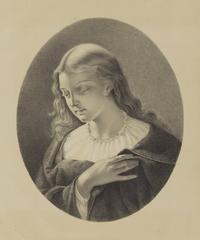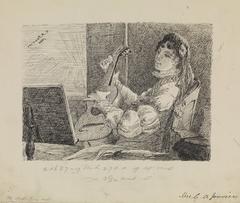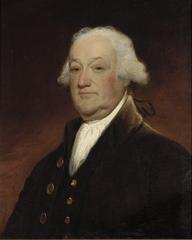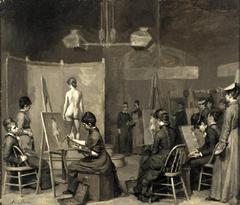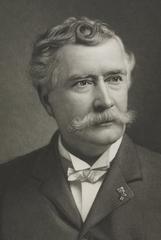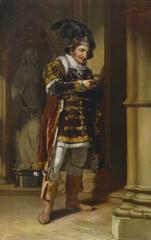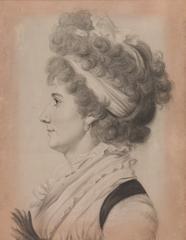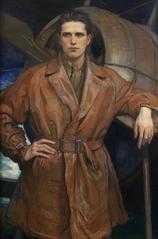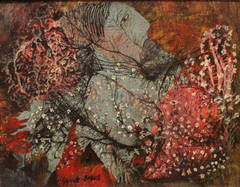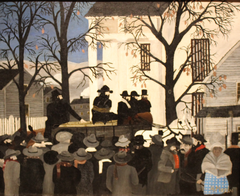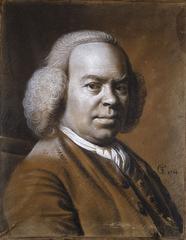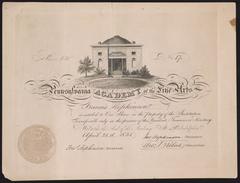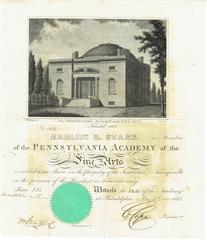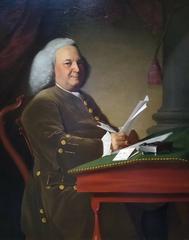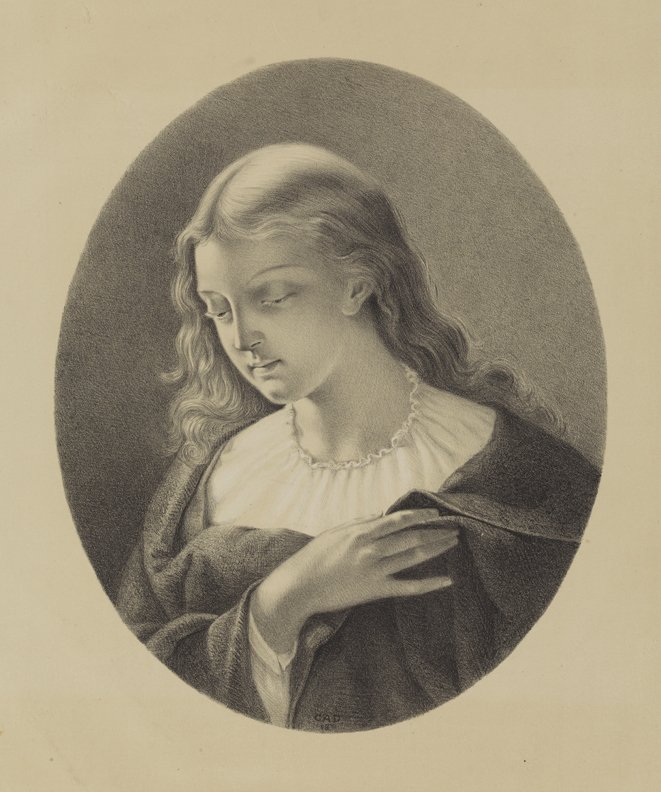
Pennsylvania Academy Of The Fine Arts
Pennsylvania Academy of the Fine Arts Visiting Hours, Tickets, and Philadelphia Historical Sites Guide
Date: 14/06/2025
Introduction
Located in the heart of Philadelphia, the Pennsylvania Academy of the Fine Arts (PAFA) is a landmark institution—America’s first art museum and art school, founded in 1805. PAFA is celebrated for its dual mission: educating artists and preserving the nation’s artistic heritage. The Academy’s rich legacy encompasses a diverse collection, historic architecture, and a vibrant calendar of exhibitions and public programs. This comprehensive guide provides up-to-date information on visiting hours, tickets, special exhibitions, and nearby historical sites, ensuring you make the most of your visit to this essential Philadelphia destination (PAFA Official Website, American Federation of Arts).
Table of Contents
- Historical Overview
- Architectural Significance
- Planning Your Visit: Hours, Tickets, and Accessibility
- Current Exhibitions and Events
- Educational Mission and Community Engagement
- Nearby Philadelphia Historical Sites
- Visitor FAQs
- Visual Highlights
- Call to Action and Further Resources
1. Historical Overview
Founding and Early Years
Established in 1805 by artists and civic leaders—including Charles Willson Peale and William Rush—PAFA was envisioned as a center for cultivating American artistic talent. The founders signed its act of incorporation in Independence Hall, setting the tone for an institution dedicated to both artistic instruction and public exhibitions. Early governance balanced the interests of wealthy patrons and practicing artists, laying the foundations for PAFA’s enduring influence in American art (PAFA Official Website).
Growth and Influence
Throughout the 19th and early 20th centuries, PAFA expanded its national reputation through annual exhibitions and a growing permanent collection. The Academy played a pivotal role in the development of American art, nurturing figures such as Mary Cassatt, Thomas Eakins, and Henry Ossawa Tanner. The opening of the Historic Landmark Building (HLB) in 1876, designed by Frank Furness and George Hewitt, marked a new era for the institution (PAFA Museum Visit).
Adaptation in the 20th and 21st Centuries
PAFA has demonstrated resilience in the face of challenges, including financial hardships and infrastructural updates. The Academy has continued to innovate, expanding its collections, restoring historic spaces, and introducing educational initiatives. Although the degree-granting college will close after the 2024–25 academic year, PAFA’s museum remains committed to public engagement and lifelong learning (PAFA Forward FAQ).
2. Architectural Significance
Historic Landmark Building (HLB)
A masterpiece of Victorian Gothic architecture, the HLB was completed in 1876 under the vision of Frank Furness and George Hewitt. The building features polychromatic stonework, dramatic arches, stained glass, and intricate ornamentation, symbolizing PAFA’s innovative spirit. The HLB’s interior is equally striking, with a grand central staircase, natural light-filled galleries, and the historic Cast Hall (PAFA Museum Visit).
Note: As of July 2024, the HLB is closed for major renovations, with reopening planned for 2026.
Samuel M.V. Hamilton Building
Adjacent to the HLB, the Hamilton Building was originally constructed in 1916 and repurposed by PAFA in the early 2000s. It now houses the School of Fine Arts, flexible exhibition spaces, and serves as the primary venue for public programs during the HLB’s renovation (PAFA Museum Visit).
Lenfest Plaza
This urban art space links PAFA’s two buildings and features rotating installations and Claes Oldenburg’s iconic “Paint Torch” sculpture, creating a lively outdoor area for community engagement (PAFA Museum Visit).
The Dream Garden
Located nearby in the Curtis Center, Maxfield Parrish’s “The Dream Garden” is a breathtaking glass mosaic mural—a testament to early 20th-century American artistic collaboration (PAFA Museum Visit).
3. Planning Your Visit: Hours, Tickets, and Accessibility
Hours (as of June 2025)
- Samuel M.V. Hamilton Building:
- Thursday & Friday: 10:00 AM – 4:00 PM
- Saturday & Sunday: 11:00 AM – 5:00 PM
- Closed Monday–Wednesday
- Historic Landmark Building: Closed for renovation until 2026
- Lenfest Plaza: Open year-round
- The Dream Garden (Curtis Center): Monday–Friday, 7:00 AM – 6:00 PM
Check the PAFA Museum Exhibitions page for the latest updates.
Ticket Information
- General Admission: Adults $15; discounted rates for seniors and students; free for children under 12 and on select community days
- Advance Tickets: Recommended, available online or at the door
- Special Admissions: Free admission for Philadelphia residents on the first Sunday of each month; reciprocal and partner programs honored
Accessibility
- Fully accessible entrances, elevators, and restrooms
- Assistive listening devices for tours and lectures
- Service animals welcome
- Contact PAFA in advance for specific accommodations
Amenities
- Museum café and gift shop
- Visitor amenities include free Wi-Fi and family activity guides
4. Current Exhibitions and Events
Major Exhibitions
- William Villalongo: Myths and Migrations (Through August 31, 2025): A survey of two decades of work exploring identity, history, and migration (PAFA Ticketing).
- Pictures of Belonging: Miki Hayakawa, Hisako Hibi, and Miné Okubo: Showcasing the art and resilience of three Japanese American women artists (PAFA Museum Exhibitions).
- Annual Juried Student Exhibition: Highlighting the next generation of artists.
- Low-Residency MFA Thesis Exhibition: Presenting innovative work by PAFA’s MFA candidates.
Special Programs
- Guided tours, family workshops, and artist talks are offered regularly. Schedules and booking details are available on PAFA’s events calendar.
5. Educational Mission and Community Engagement
PAFA’s commitment to education extends from its historic art school to robust community outreach. The Academy was among the first in the U.S. to offer equal access to women and continues to highlight diverse voices through its exhibitions and programs (WhichMuseum, Philadelphia Encyclopedia). Even as degree programs conclude, PAFA will maintain a focus on lifelong learning, public lectures, and continuing education (PAFA Forward FAQ).
The Dorothy & Kenneth Woodcock Archives and the integration of study and exhibition spaces provide unique opportunities for research and engagement (PAFA Mission & History).
6. Nearby Philadelphia Historical Sites
PAFA’s central location at 118–128 North Broad Street puts it within easy reach of many major Philadelphia attractions:
- Independence National Historical Park: Liberty Bell and Independence Hall
- The Barnes Foundation: Impressionist and Modern masterpieces
- Rodin Museum: Extensive collection of Rodin’s sculptures
- Philadelphia Museum of Art: Iconic for its art and “Rocky Steps”
- Reading Terminal Market: Historic food market near City Hall
Combine a visit to PAFA with these sites for a comprehensive cultural day in Philadelphia (The Tourist Checklist).
7. Visitor FAQs
Q: What are PAFA’s current visiting hours?
A: Hamilton Building is open Thursday–Friday, 10:00 AM–4:00 PM; Saturday–Sunday, 11:00 AM–5:00 PM; closed Monday–Wednesday.
Q: How much do tickets cost?
A: Adults $15; discounts for seniors and students; free for children under 12 and on special days.
Q: Are guided tours available?
A: Yes, guided tours and special programs are regularly scheduled. See PAFA’s website for details.
Q: Is PAFA accessible for visitors with disabilities?
A: Yes, all public spaces are fully accessible, and staff can provide accommodations.
Q: Can I take photographs inside PAFA?
A: Non-flash photography for personal use is generally allowed; restrictions may apply for special exhibitions.
Q: How do I get to PAFA?
A: Easily accessible via SEPTA, car, or bike; parking is available nearby.
8. Visual Highlights
Alt text: Pennsylvania Academy of the Fine Arts Historic Landmark Building at 118 N. Broad Street, Philadelphia
Alt text: Interior gallery view of Pennsylvania Academy of the Fine Arts featuring American paintings
9. Call to Action and Further Resources
Plan your visit to the Pennsylvania Academy of the Fine Arts today! For digital guides, audio tours, and insider tips, download the Audiala app. Follow PAFA’s social media channels for the latest exhibition news and events. Explore related articles for ideas on nearby Philadelphia historical sites and art museums.
External Resources
- PAFA Official Website - Tickets & Hours
- PAFA on Britannica
- PAFA Exhibition History
- Uncovering PAFA - Visitor Insights
- Artnet News - PAFA College Closure
- PAFA Museum Visit
- PAFA Museum Exhibitions
- PAFA Mission & History
- PAFA Forward FAQ
- American Federation of Arts
- The Tourist Checklist
- WhichMuseum
- Philadelphia Encyclopedia
